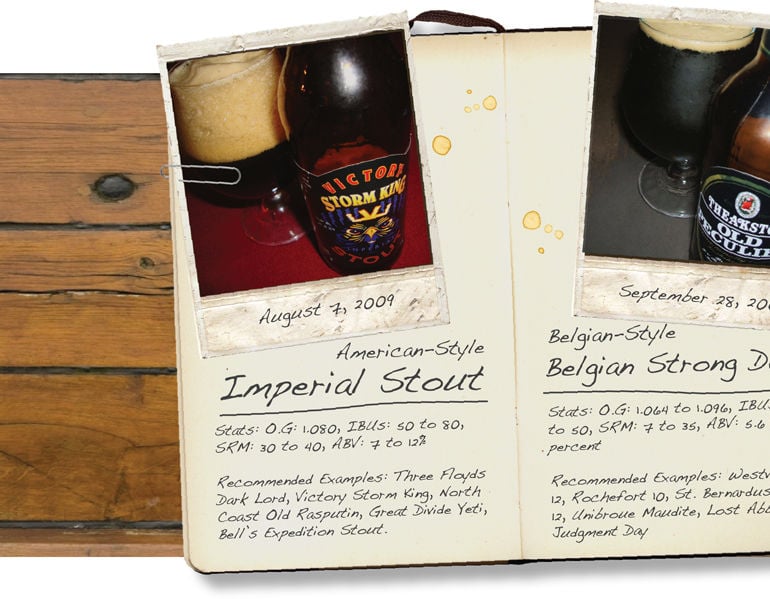Start 14-Day Trial Subscription
*No credit card required

What is Imperial Stout?
The Merriam-Webster Dictionary defines the word “imperial” as something “of superior or unusual size or excellence.” This is certainly an apt description of imperial stouts, and it is particularly fitting for the Americanized varieties. We like to do things big in America, and when it come to stouts, big often means a massive grain bill and truckloads of hops in varying epic proportions.
While the American-style imperial stout’s relative excellence is a matter of personal preference, its heft and ferocity is not so readily disputed. Often weighing in at 10 percent ABV (alcohol by volume) or higher and boasting IBU’s (International Bitterness Units) sometimes flirting with the triple digits, the American-style imperial stout is a beer to be reckoned with.
Originating in London just before the turn of the 19th century, the imperial stout was first brewed as a particularly strong porter – a “stout” porter, with a higher gravity and hop ratio for export to the Baltics. Probably the most famous early example was Thrale’s Entire, a beer that is now extinct. Contemporary examples of English-style imperial stout, like Samuel Smith’s, often lean toward a slightly malt-focused character and exhibit pronounced fruit esters when compared to their American counterparts.
American-style imperial stouts might be described as souped-up versions of their British forebears, with notably increased bitterness, roastiness and higher alcohol levels being common hallmarks. The result in some cases could be described as controlled chaos. In others, you’ll find clear evidence of the brewer’s art – melding a cacophony of disparate elements into a complex yet unified whole through the alchemy (or, in this case, alechemy) of brewing science.
Using a base of pale malts, like most ale styles, American-style imperial stouts also employ copious quantities of specialty malts like chocolate, roasted barley and black patent to impart the characteristic semi-opaque to opaque color, intensely roasted nose and generous flavor profile. Occasionally you’ll find examples that harken back to the “stout” porters of old, exemplifying a slight tart or acidic aspect due to the use of brewing water containing certain mineral salts or high quantities of acidic specialty grains.
Roasted notes of chocolate, espresso and even burnt toast often accompany this style, along with some dark fruit and varying levels of hops. The fruitiness typically yields to the aggressive hop bitterness and residual malt sweetness of many examples.
In the glass, you’ll find a black abyss. Although sometimes displaying a deep reddish hue, most examples are nearly opaque black with a medium brown head that may be slightly feeble due to exceptionally high alcohol levels.
On the palate, a mélange of flavors will vie for attention, including intensely roasted malts, hop bitterness – more bitterness than actual hop flavor is common – and some caramel or molasses-like sweetness, creating a complex balance of flavors that are quite aggressive. Couple this with a thick, dense mouth feel and plenty of warming alcohol and you’ve got a beer that is epic in every respect. Not typically high in carbonation levels, expect a smooth, bittersweet finish with some residual hop bitterness in the back of the mouth and a slow alcohol burn.
Because the American-style imperial stout is so big, dark and scary, it’s appropriate that the most popular and sought-after examples of the style – some of which are brewed only once a year – bear names like Dark Lord, Storm King and Yeti.
Let the imbiber be warned, these beers are not to be taken lightly. Instead, try pairing them with a decadent dark chocolate dessert and you’ll see a softer, more subtle side of the beast.
Look here for Imperial Stout reviews by our panel of judges.



